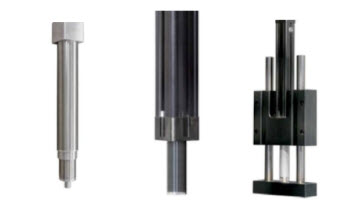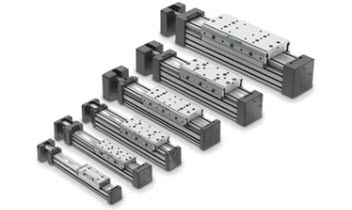Please be aware we use cookies to make your experience better. A cookie is a piece of data stored on a visitor's hard drive to help us improve your access and identify repeat visitors. Cookies can also enable us to track and target the interests of our users to enhance the experience on our site. Usage of a cookie is in no way linked to any personally identifiable non-public information. Learn more.
 | RSX Series Electric Rod-Style ActuatorHigh force electric linear actuators designed to replace hydraulic systems, providing efficient, precise performance with long life and reliability in demanding conditions. Request Quote | View Details |
 | SCN5-010-050AS03-NASCN5 Series, 50 mm Stroke, 100N (22.5 lbf) Max Cont. Thrust, 400 mm/s Max Speed $364.00 As low as $341.00 | View Details |
 | SCLG5-010-050AB-NALead Screw, 10kgf force, External Amp, 50mm stroke $953.00 As low as $891.00 | View Details |
 | SCN5-010-100AS03-NASCN5 Series, 100 mm Stroke, 100N (22.5 lbf) Max Cont. Thrust, 400 mm/s Max Speed $455.00 As low as $426.00 | View Details |
 | SCLG5-010-100AB-NALead Screw, 10kgf force, External Amp, 100mm stroke $1,006.00 As low as $941.00 | View Details |
 | SCN5-010-150AS03-NASCN5 Series, 150 mm Stroke, 100N (22.5 lbf) Max Cont. Thrust, 400 mm/s Max Speed $541.00 As low as $506.00 | View Details |
 | SCLG5-010-150AB-NALead Screw, 10kgf force, External Amp, 150mm stroke $1,054.00 As low as $986.00 | View Details |
 | SCN5-010-200AS03-NASCN5 Series, 200 mm Stroke, 100N (22.5 lbf) Max Cont. Thrust, 200 mm/s Max Speed $626.00 As low as $586.00 | View Details |
 | SCLG5-010-200AB-NALead Screw, 10kgf force, External Amp, 200mm stroke $1,124.00 As low as $1,051.00 | View Details |
 | SCN5-010-250AS03-NASCN5 Series, 250 mm Stroke, 100N (22.5 lbf) Max Cont. Thrust, 160 mm/s Max Speed $712.00 As low as $666.00 | View Details |
 | SCLG5-010-300AB-NALead Screw, 10kgf force, External Amp, 300mm stroke $1,226.00 As low as $1,146.00 | View Details |
 | SCN5-010-300AS03-NASCN5 Series, 300 mm Stroke, 100N (22.5 lbf) Max Cont. Thrust, 120 mm/s Max Speed $787.00 As low as $736.00 | View Details |
 | SCLG6-020-200AB-NALead Screw, 20kgf force, External Amp, 200mm stroke $1,012.00 As low as $946.00 | View Details |
 | SCN6-060-300ABW-NASCN6 Series, 300 mm Stroke, 600N (135 lbf) Max Cont. Thrust, 100 mm/s Max Speed, Dust Proof $1,338.00 As low as $1,251.00 | View Details |
 | SCLG6-020-300AB-NALead Screw, 20kgf force, External Amp, 300mm stroke $1,012.00 As low as $946.00 | View Details |


